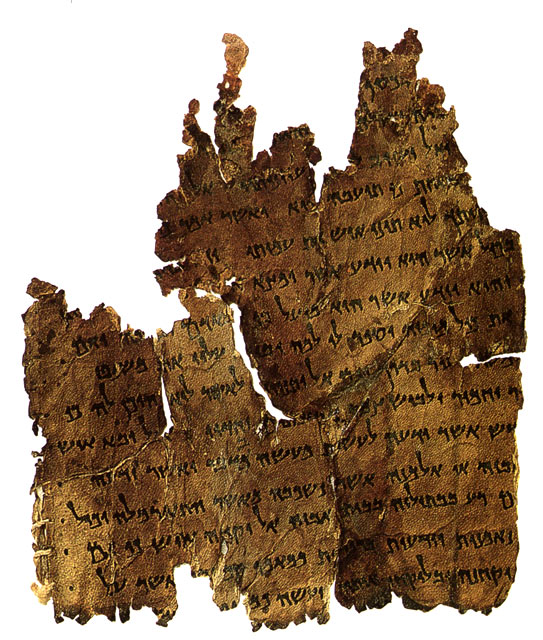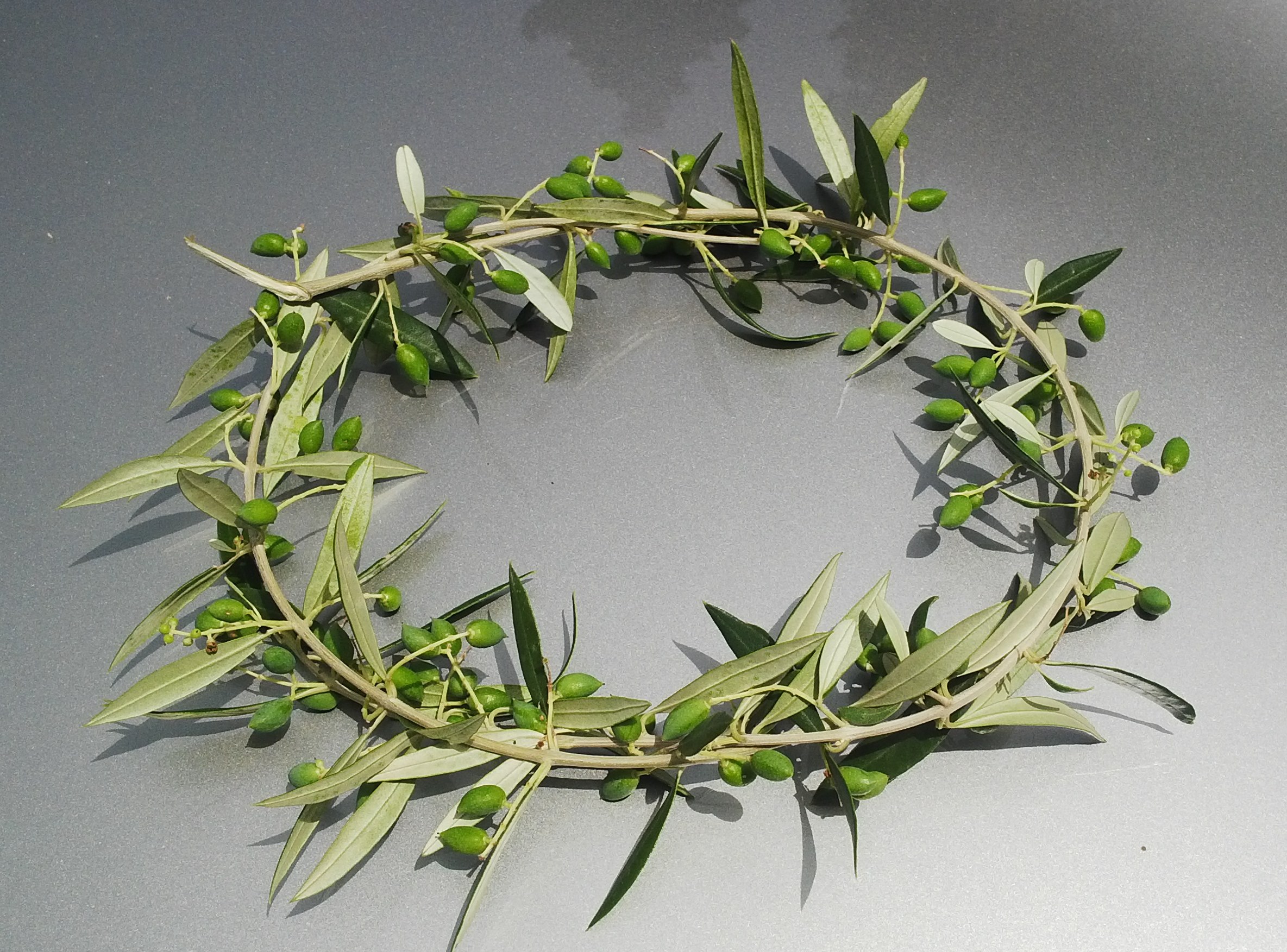|
Klila
In Mandaeism, the klila ( myz, ࡊࡋࡉࡋࡀ) is a small myrtle (''asa'') wreath or ring (translated as "circlet" by E. S. Drower) used during Mandaean religious rituals. The klila is a female symbol that complements the '' taga'', a white crown which always takes on masculine symbolism.Drower, Ethel Stefana (1937). ''The Mandaeans of Iraq and Iran''. Oxford at the Clarendon Press. The ''klila'' is used to adorn the drabsha, a wooden cross covered with a white cloth that is the main symbol of Mandaeism. Use in rituals The ''klila'' is used during most Mandaean rituals, including masbuta, masiqta, and priest initiation rituals. In the ''Qolasta'' Several prayers in the ''Qolasta'' are recited when consecrating and putting on the ''klila'', including prayers 19, 46, 47, 61, and 79. In E. S. Drower's version of the ''Qolasta'', prayers 305-329 are recited for the klila, as well as for the taga. See also *Drabsha *Laurel wreath *Olive wreath The olive wreath, also kn ... [...More Info...] [...Related Items...] OR: [Wikipedia] [Google] [Baidu] |
Taga (Mandaeism)
In Mandaeism, the taga ( myz, ࡕࡀࡂࡀ) is a white crown traditionally made of silk that is used during Mandaean religious rituals. The ''taga'' is a white crown which always takes on masculine symbolism, while the klila (myrtle wreath) is a feminine symbol that complements the taga. Use in rituals Along with the ''klila'', the ''taga'' is used during most Mandaean rituals, including masbuta, masiqta, and priest initiation rituals.Drower, Ethel Stefana (1937). ''The Mandaeans of Iraq and Iran''. Oxford at the Clarendon Press. In the ''Qolasta'' Several prayers in the ''Qolasta'' are recited when consecrating and putting on the ''taga''. See also *Drabsha *Klila *Rasta (Mandaeism) A rasta ( myz, ࡓࡀࡎࡕࡀ) is a white ceremonial garment that Mandaeans wear during most baptismal rites, religious ceremonies, and during periods of uncleanliness. It signifies the purity of the World of Light. The rasta is worn equally by ... References Mandaean religious objects S ... [...More Info...] [...Related Items...] OR: [Wikipedia] [Google] [Baidu] |
Qolasta
The Qolastā, Qulasta, or Qolusta ( myz, ࡒࡅࡋࡀࡎࡕࡀ; mid, Qōlutā, script=Latn) is the canonical prayer book of the Mandaeans, a Gnostic ethnoreligious group from Iraq and Iran. The Mandaic word ''qolastā'' means "collection". The prayerbook is a collection of Mandaic prayers regarding baptisms (''masbuta'') and other sacred rituals involved in the ascension of the soul (''masiqta''). Date The ''Qolasta'', and two other key texts to Mandaic literature, the ''Mandaean Book of John'' and the ''Ginza Rabba'', were compiled together. However, their date of authorship is heavily debated, some believing it to be during the second and third centuries, and others believing it to be conceived during the first century. In 1949, Torgny Säve-Söderbergh demonstrated that many passages in the Manichaean Psalms of Thomas were paraphrases or even word-by-word translations of Mandaean prayers in the Qolasta. Säve-Söderbergh also argued that the Manichaean psalms had borrowed fro ... [...More Info...] [...Related Items...] OR: [Wikipedia] [Google] [Baidu] |
Myrtus
''Myrtus'' (commonly called myrtle) is a genus of flowering plants in the family Myrtaceae. It was first described by Swedish botanist Linnaeus in 1753. Over 600 names have been proposed in the genus, but nearly all have either been moved to other genera or been regarded as synonyms. The genus ''Myrtus'' has three species recognised today: *''Myrtus communis'' – Common myrtle; native to the Mediterranean region in southern Europe *''Myrtus nivellei'' – Saharan myrtle; native to North Africa *''Myrtus phyllireaefolia'' Description Common myrtle ''Myrtus communis'', the "common myrtle", is native across the Mediterranean region, Macaronesia, western Asia, and the Indian subcontinent. It is also cultivated. The plant is an evergreen shrub or small tree, growing to tall. The leaf is entire, 3–5 cm long, with a fragrant essential oil. The star-like flower has five petals and sepals, and numerous stamens. Petals usually are white. The flower is pollinated by insec ... [...More Info...] [...Related Items...] OR: [Wikipedia] [Google] [Baidu] |
Masbuta
Maṣbuta ( myz, ࡌࡀࡑࡁࡅࡕࡀ) is the ritual of immersion in water in the Mandaeism, Mandaean religion. Overview Mandaeans revere John the Baptist and practice frequent baptism (''masbuta'') as a Ritual purification, ritual of purification, not of initiation. They are possibly one of the earliest peoples to practice ritual baptism. Mandaeans undergo baptism on Sundays (''Habshaba''), wearing a white sacral robe (''Rasta (Mandaeism), rasta''). Baptism for Mandaeans consists of a triple full immersion in water, a triple ''signing'' of the forehead with water and a triple drinking of water. The priest (''Mandaean priest, rabbi'') then removes a ring made of myrtle (''klila'') worn by the baptized and places it on their forehead. This is then followed by a handshake (''kušṭa'' - hand of truth) with the priest. The final blessing involves the priest laying his right hand on the baptized person's head. ''Living water'' (fresh, natural, flowing water, called ''mia hayyi'') is ... [...More Info...] [...Related Items...] OR: [Wikipedia] [Google] [Baidu] |
Masiqta
The masiqta ( myz, ࡌࡀࡎࡉࡒࡕࡀ) is a mass or ritual practiced in the Mandaean religion in order to help guide the soul (''nišimta'') towards the World of Light in Mandaean cosmology. They are typically performed as funerary rites for Mandaeans who have just died. Although usually translated as "death mass", a few types of ''masiqta'' are also performed for living people, such as when priests are ordained. Purpose The complex ritual involves guiding the soul through the ''maṭarta'', or toll houses located between the Earth (Tibil) and the World of Light, which are guarded by various uthras and demons. A successful masiqta merges the incarnate soul ( myz, ࡍࡉࡔࡉࡌࡕࡀ ; roughly equivalent to the ''psyche'' or " ego" in Greek philosophy) and spirit ( myz, ࡓࡅࡄࡀ ; roughly equivalent to the ''pneuma'' or "breath" in Greek philosophy) from the Earth (Tibil) into a new merged entity in the World of Light called the ''ʿuṣṭuna''. The ''ʿuṣṭuna'' can ... [...More Info...] [...Related Items...] OR: [Wikipedia] [Google] [Baidu] |
Mandaeans Celebrating The Creation Day (Brunaya), Maysan, Iraq - Mar 17, 2019 10
Mandaeans ( ar, المندائيون ), also known as Mandaean Sabians ( ) or simply as Sabians ( ), are an ethnoreligious group who are followers of Mandaeism. They believe that John the Baptist was the final and most important prophet. They may have been among the earliest religious groups to practice baptism, as well as among the earliest adherents of Gnosticism, a belief system of which they are the last surviving representatives today. The Mandaeans were originally native speakers of Mandaic, an Eastern Aramaic language, before they nearly all switched to Iraqi Arabic or Persian as their main language. After the invasion of Iraq by the United States and its allies in 2003, the Mandaean community of Iraq, which before the war numbered 60,000-70,000 persons, collapsed due to the rise of Islamic extremism and the absence of protection against it; with most of the community relocating to Iran, Syria and Jordan, or forming diaspora communities beyond the Middle East. Mandea ... [...More Info...] [...Related Items...] OR: [Wikipedia] [Google] [Baidu] |
Mandaic Words And Phrases
Mandaic may refer to: * Mandaic language * Mandaic alphabet ** Mandaic (Unicode block) Mandaic is a Unicode block containing characters of the Mandaic script used for writing the historic Eastern Aramaic, also called Classical Mandaic, and the modern Neo-Mandaic language. History The following Unicode-related documents record th ... {{disambiguation Language and nationality disambiguation pages ... [...More Info...] [...Related Items...] OR: [Wikipedia] [Google] [Baidu] |
Symbols Of Abrahamic Religions
A symbol is a mark, sign, or word that indicates, signifies, or is understood as representing an idea, object, or relationship. Symbols allow people to go beyond what is known or seen by creating linkages between otherwise very different concepts and experiences. All communication (and data processing) is achieved through the use of symbols. Symbols take the form of words, sounds, gestures, ideas, or visual images and are used to convey other ideas and beliefs. For example, a red octagon is a common symbol for "STOP"; on maps, blue lines often represent rivers; and a red rose often symbolizes love and compassion. Numerals are symbols for numbers; letters of an alphabet may be symbols for certain phonemes; and personal names are symbols representing individuals. The variable 'x', in a mathematical equation, may symbolize the position of a particle in space. The academic study of symbols is semiotics. In cartography, an organized collection of symbols forms a legend for a map. E ... [...More Info...] [...Related Items...] OR: [Wikipedia] [Google] [Baidu] |
Mandaean Religious Objects
Mandaeans ( ar, المندائيون ), also known as Mandaean Sabians ( ) or simply as Sabians ( ), are an ethnoreligious group who are followers of Mandaeism. They believe that John the Baptist was the final and most important prophet. They may have been among the earliest religious groups to practice baptism, as well as among the earliest adherents of Gnosticism, a belief system of which they are the last surviving representatives today. The Mandaeans were originally native speakers of Mandaic, an Eastern Aramaic language, before they nearly all switched to Iraqi Arabic or Persian as their main language. After the invasion of Iraq by the United States and its allies in 2003, the Mandaean community of Iraq, which before the war numbered 60,000-70,000 persons, collapsed due to the rise of Islamic extremism and the absence of protection against it; with most of the community relocating to Iran, Syria and Jordan, or forming diaspora communities beyond the Middle East. Mand ... [...More Info...] [...Related Items...] OR: [Wikipedia] [Google] [Baidu] |
Olive Wreath
The olive wreath, also known as ''kotinos'' ( el, κότινος), was the prize for the winner at the ancient Olympic Games. It was a branch of the wild olive tree ''Kallistefanos Elea'' (also referred to as ''Elaia Kallistephanos'') that grew at Olympia, intertwined to form a circle or a horse-shoe. The branches of the sacred wild-olive tree near the temple of Zeus were cut by a ''pais amphithales'' ( grc, , a boy whose parents were both alive) with a pair of golden scissors. Then he took them to the temple of Hera and placed them on a gold-ivory table. From there, the Hellanodikai (the judges of the Olympic Games) would take them, make the wreaths and crown the winners of the Games. History According to Pausanias it was introduced by Heracles as a prize for the running race winner to honor his father Zeus. In the ancient Olympic Games there were no gold, silver, or bronze medals. There was only one winner per event, crowned with an olive wreath made of wild-olive leaves f ... [...More Info...] [...Related Items...] OR: [Wikipedia] [Google] [Baidu] |
Laurel Wreath
A laurel wreath is a round wreath made of connected branches and leaves of the bay laurel (), an aromatic broadleaf evergreen, or later from spineless butcher's broom (''Ruscus hypoglossum'') or cherry laurel (''Prunus laurocerasus''). It is a symbol of triumph and is worn as a chaplet around the head, or as a garland around the neck. The symbol of the laurel wreath traces back to Ancient Greece. In Greek mythology, the god Apollo, who is patron of lyrical poetry, musical performance and skill-based athletics, is conventionally depicted wearing a laurel wreath on his head in all three roles. Wreaths were awarded to victors in athletic competitions, including the ancient Olympics; for victors in athletics they were made of wild olive tree known as ''" kotinos"'' (), (sc. at Olympia) – and the same for winners of musical and poetic competitions. In Rome they were symbols of martial victory, crowning a successful commander during his triumph. Whereas ancient laurel wreaths are mos ... [...More Info...] [...Related Items...] OR: [Wikipedia] [Google] [Baidu] |






